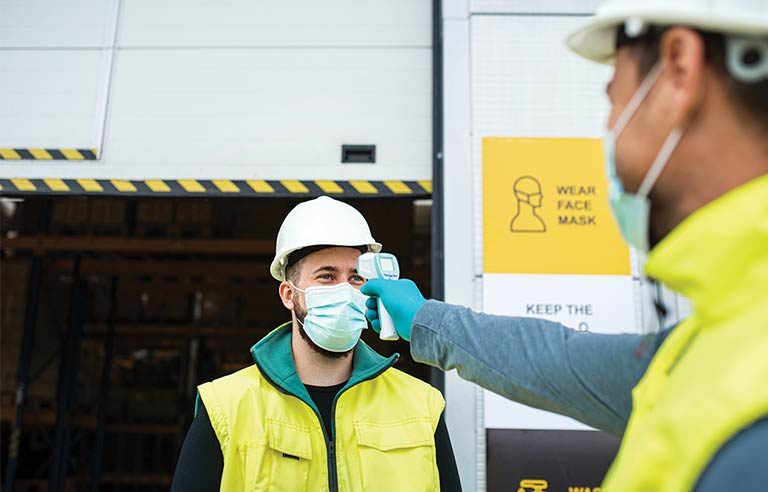Navigate safety in the future world of work

As with all workplace safety and health efforts, staying safe in the future world of work will be the combined effort of employers taking the right steps to reduce risk and employees doing their part to look out for themselves and each other.
As an employee, you can help create and maintain a safe workplace by continuing to participate in existing and new safety and health programs. This may include hazard reporting, observation activities, pre-shift safety meetings, or toolbox and tailgate talks. Keep remembering that these programs were put in place for a good reason.
It’s also likely your employer will have policies related to COVID-19 in place for a period of time as we transition to a post-pandemic work environment. Examples include physical distancing, mask requirements and sanitation controls. Some workers may consider these requirements frustrating or unnecessary. But given the many variables related to the spread of the virus and the uncertainties around “herd immunity,” it’s important to follow the policies your employer considers necessary for safe work.
Your changed workplace may not be perfect and may present challenges. Be open to:
- Problem-solving.
- Staying flexible in the face of changes that may come more quickly than usual.
- Communicating what is and isn’t working to your supervisor and/or leadership.
It’s important to quickly and clearly communicate any hazards you identify or concerns you may have. In some cases, your employer won’t know what it doesn’t know until the rubber meets the road. Being willing to take this journey together with your team and employer is half the battle.
Post a comment to this article
Safety+Health welcomes comments that promote respectful dialogue. Please stay on topic. Comments that contain personal attacks, profanity or abusive language – or those aggressively promoting products or services – will be removed. We reserve the right to determine which comments violate our comment policy. (Anonymous comments are welcome; merely skip the “name” field in the comment box. An email address is required but will not be included with your comment.)

